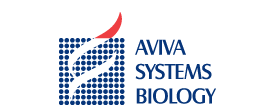
The SK1 antibody is specific for the 32-34 kDa alpha chain of human CD8, known as CD8a or CD8 alpha. CD8a can form a homodimer (CD8 alpha-alpha), but is more commonly expressed as a heterodimer with a second chain known as CD8b or CD8 beta. CD8 acts as a co-receptor for antigen recognition and subsequent T cell activation that is initiated upon binding of the T cell receptor (TCR) to antigen-bearing MHC Class I molecules. The cytoplasmic domains of CD8 provide binding sites for the tyrosine kinase lck, facilitating intracellular signaling events that lead to T cell activation, development, and cytotoxic effector functions. CD8+ cytotoxic T cells (CTLs) play an important role in inducing cell death of tumor cells, as well as cells infected by virus, bacteria or parasites.
The SK1 antibody is widely used as a phenotypic marker for CD8 on cytotoxic T cells, thymocytes, as well as on certain cell types that do not also express the TCR, including some NK cells and lymphoid dendritic cells. It is cross-reactive with CD8 in several non-human species, including Baboon, Chimpanzee, Cynomolgus and Rhesus. If used together with an alternative Anti-Human CD8a clone, RPA-T8, the SK1 antibody will not block binding of RPA-T8 to CD8a.
Campanelli R, Palermo B, Garbelli S, Mantovani S, Lucchi P, Necker A, Lantelme E and Giachino C. 2002. Int Immunol. 14(1): 39-44. (Flow Cytometry)
Walter S, Herrgen L, Schoor O, Jung G, Wernet D, Buhring H-J, Rammensee H-G and Stevanovic S. 2003. J. Immunol. 171(10): 4974-4978. (Flow Cytometry)
Cervasi B, Paiardinin M, Serafini S, Fraternale A, Menotta M, Engram J, Lawson B, Staprans I, Piedimonte G, Perno CF, Silvestri G and Magnani M. 2006. J. Virol. 80(21): 10335-10345. (Flow Cytometry - Sooty Mangabeys)
Verstrepen BE, Verschoor EJ, Fagrouch ZC, Mooij P, de Groot NG, Bontrop RE, Bogers WM, Heeney JL and Koopman G. 2014. PLoS ONE 9(4): e95103. doi:10.1371/journal.pone.0095103. (Flow Cytometry - Chimpanzee)
Permar SR, Klumpp SA, Mansfield KG, Kim W-K, Gorgone DA, Lifton MA, Williams KC, Schmitz JE, Reimann KA, Axthelm MK, Polack FP, Griffin DE and Letvin NL. 2003. J. Virol. 77(7): 4396-4400. (Flow Cytometry - Rhesus)
Ahmed AFK, Ohtani H, Nio M, Fuanki N, Shimaoka S, Nagura H and Ohi R. 2001. J. Pathol. 193(3): 383-389. (Immunohistochemistry)
Bukowska-Straková K, Baran J, Gawlicka M and Kowalczyk, D. 2006. Folia Histochemica et Cytobiologica 44(3): 179-183.
ebiomall.com






>
>
>
>
>
>
>
>
>
>
>
>
本试验阳性结果主要见于下列几种情况:
1.自身免疫性贫血,(IgG)型引起的溶血性贫血,本试验直接反应常呈强阳性,间接反应大多阴性,但亦可阳性。
2.药物诱发的免疫性溶血性贫血①α-甲基多巴型:直接及间接反应均阳性。②青霉素型:直接反应阳性,间接反应阴性,以上二型如以正常红细胞先与有关药物于37℃培育后再加病人血清、间接反应均为阳性。③福阿亭型:(奎宁等药物)抗体通常为IgM,偶有IgG型者,直接反应为阳性,间接反应阴性,但如用IgG抗血清做试剂则结果大部分均为阴性,但如培育时加入新鲜正常人血清(供应补体)则结果为阳性。
3.冷凝集素综合征直接反应阳性,间接反应阴性(试验需在37℃下进行)由于本病红细胞膜附着的是补体C4和C3而不是IgG或IgM,如果用抗IgG或抗IgM抗血清做试验时,则结果阴性,如以抗补体的抗血清做试验则直接反应阳性。
4.新生儿同种免疫溶血病,因Rh血型不合所致溶血病,直接及间接反应均强阳性,持续数周、换血输血后数天内可变为阴性,由于“ABO”血型不合引起的溶血病,结果常为阴性或弱阳性。
5.红细胞血型不合引起的输血反应,ABO或Rh血型不合输血,供者的红细胞被受者的血型抗体致敏,在供者被致敏的红细胞完全破坏以前,直接反应阳性,Rh阴性者如过去不曾接受过Rh阳性者的血或曾妊娠胎儿为Rh阳性者,间接反应阳性,如无上述接触,第一次输血后(Rh阳性的血),数天之内间接反应也会变为阳性。
6.其它在传染性单核细胞增多症、SLE、恶性淋巴瘤、慢性淋巴细胞白血病、癌肿、铅中毒、结节性动脉周围炎、EVan氏综合征等,病人直接反应亦可阳性,阵发性寒冷性血红蛋白尿症患者中,急性发作后用抗补体血清做试验直接反应常为阳性。展开
鼠抗人CD3单克隆抗体针对人的CD3
CD3单克隆抗体,要看其说明书,该抗体是否识别其他生物(如大鼠)的CD3.









